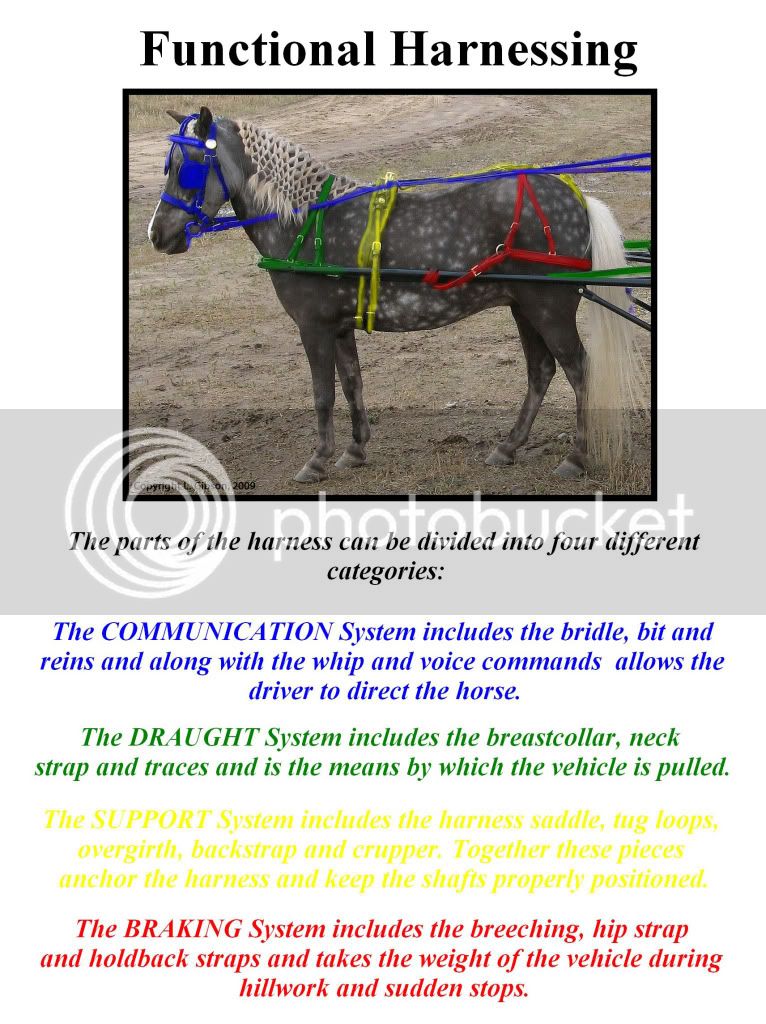I have changed Lance from the tie down straps at the girth to breeching. I want to drive him on hills and think this is the safer way to go. I can not post pictures right now as I am the only one at the barn that is driving and the people that are there when I drive are only the people who clean.
So this is what is happening. I believe that I have the breeching at the correct spot. I am finding that the cart shafts will now go up when Lance backs. I am also finding that the straps that attach to the cart on one side are coming loose. I have no idea why this is happening when it did not happen before. Any idea without pictures. I need to try and solve this myself. I will get my husband to look at things this weekend after he gets home. He travels 5 days a week..
So this is what is happening. I believe that I have the breeching at the correct spot. I am finding that the cart shafts will now go up when Lance backs. I am also finding that the straps that attach to the cart on one side are coming loose. I have no idea why this is happening when it did not happen before. Any idea without pictures. I need to try and solve this myself. I will get my husband to look at things this weekend after he gets home. He travels 5 days a week..




